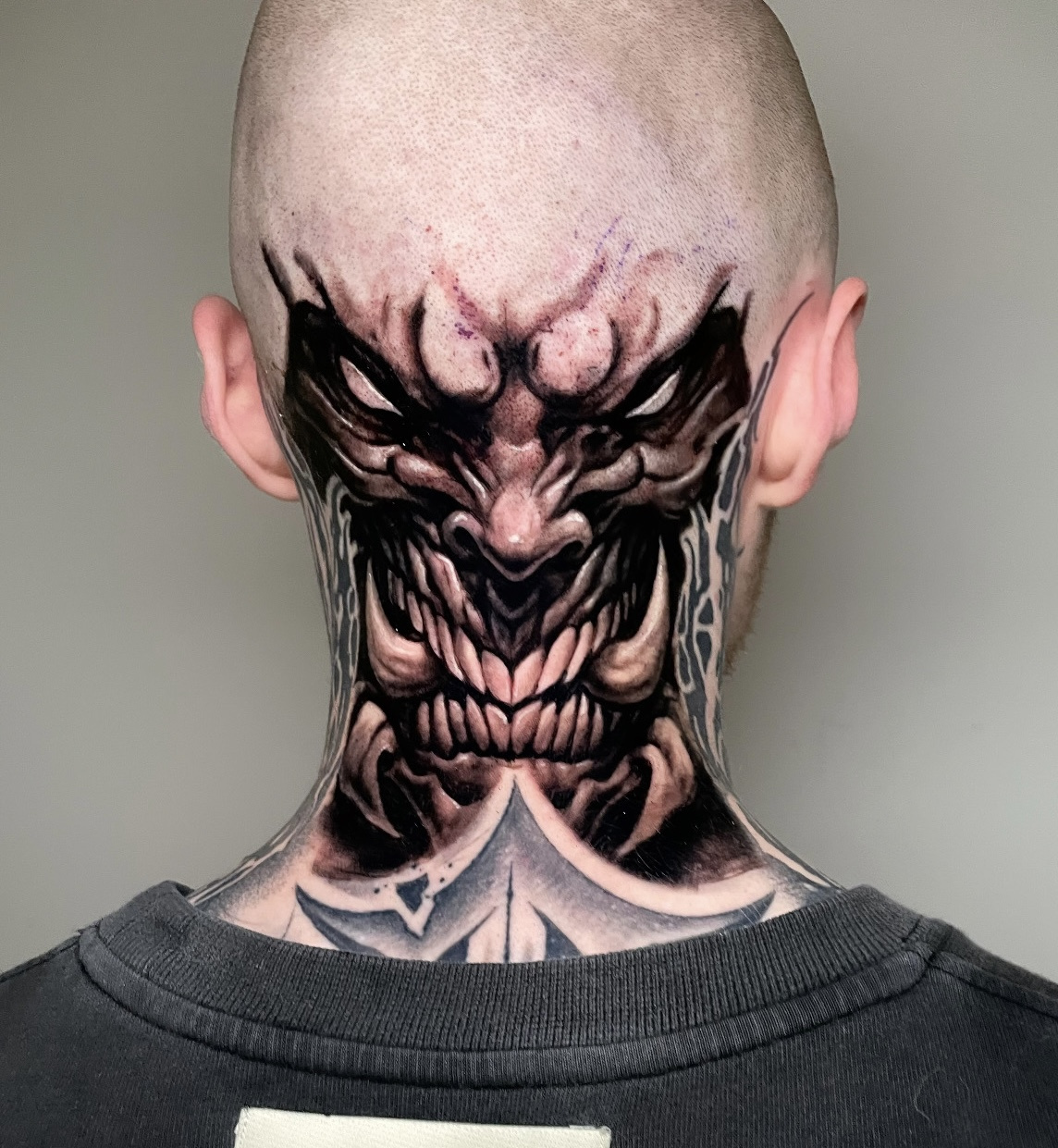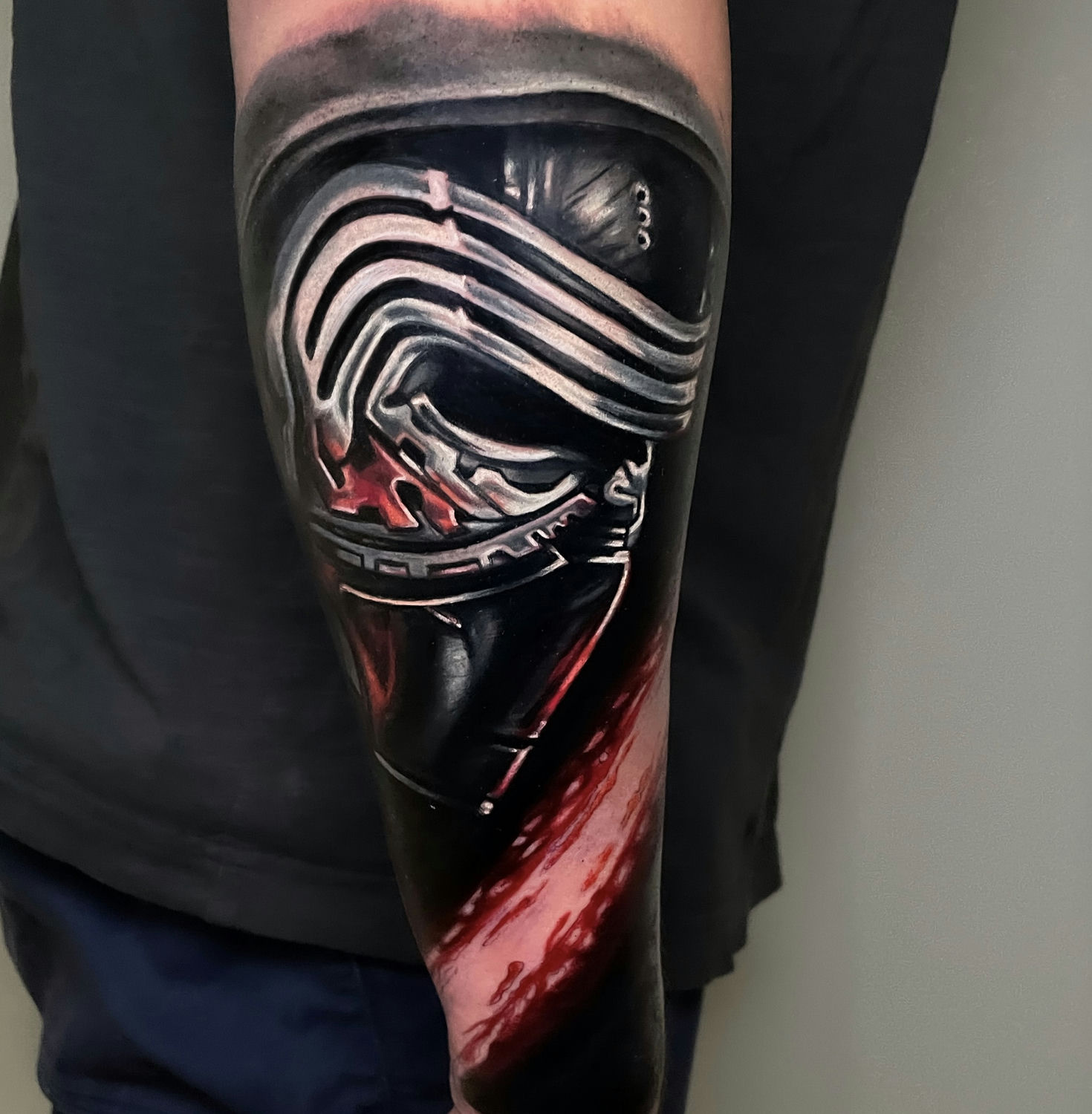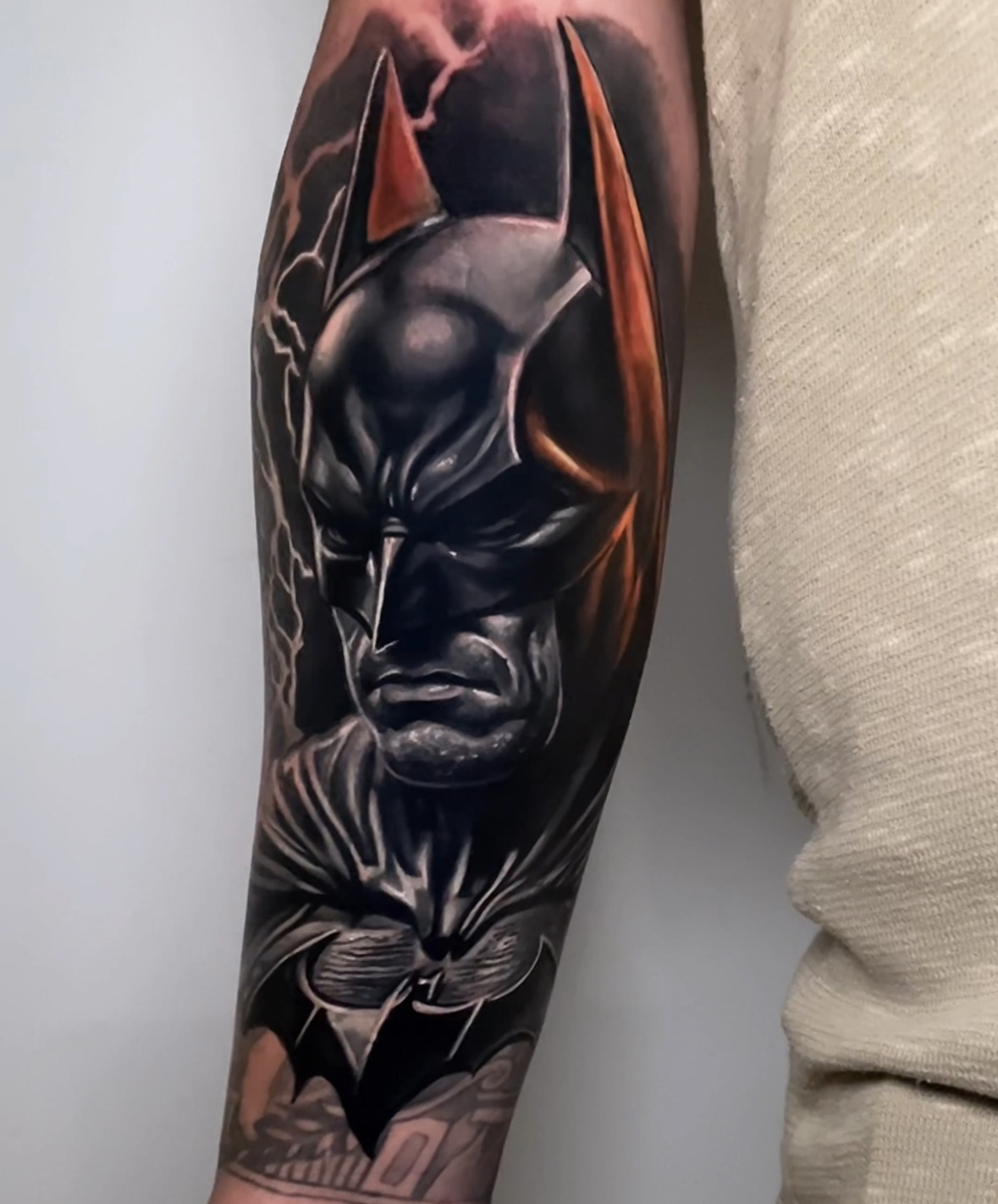Meet Thomas "Tomek" Glinski — a leading artist at Paintera Tattoo and an authority in realistic tattoo artistry, renowned for his skill in crafting unique cover-ups. Tomek's artistic journey spans both Germany and Canada, where he’s earned a reputation for creating detailed black-and-white and color pieces that elevate his clients' visions into enduring works of art. His expertise also shines in transforming "bad" tattoos into timeless pieces that retain their vibrancy and aesthetic appeal over the years.
With decades of experience, collaborations with celebrated figures like German rapper Majoe, and success as a top artist at Paintera Tattoo — a studio designed as a collaborative space for artists across various mediums — Tomek offers unique insights into the challenges and rewards of realistic tattooing. In this interview, he shares his experiences working with high-profile clients and his thoughts on the future of tattoo artistry. Read on to explore how Tomek blends technique with creativity, as well as the motivations that keep him innovating in the field.

Tomek, how did your early experiences in the street art scene influence your approach to tattooing?
- The fact that I mainly carried out commissioned work laid the foundation for my later career. The customer had the idea, and I implemented this idea creatively.
What was the transition like from street art to tattooing? Were there any skills that transferred directly?
- Graffiti & street art definitely brought me a lot of understanding about flow & composition. Dark/light or complementary contrasts are essential for my work… graffiti helped me learn & understand that.

What drew you to realism as a tattoo style, and how do you approach both black-and-white and color tattoos differently?
- I think realism has the more "wow-factor" to it. Of course, every style can be amazing, but I think every person who’s not necessarily into tattoos can recognize a well-executed portrait, for example. Also, even after over 10 years, it never gets boring to see how a few blue lines from the stencil become more and more "alive" during a session. It’s just the most fun for me.
In black and gray, it’s about tones; in color tattoos, it’s about interpretation of different colors, which is way more challenging. I always focus on depth and making my work look more three-dimensional. The goal in both styles is the same, but the approach is very different.

Cover-ups have become your specialty. What is the most challenging aspect of creating a successful cover-up?
- The options are limited for what’s possible with a cover-up. I could often choose the easier way with a lot of blackwork, but I like to challenge myself with more complex designs and try to implement structures of the old tattoo into the new one… which can be frustrating, I have to admit. At the same time, trying to put my own style into it instead of just doing a random cover-up can be very challenging.

What do you think sets you apart from other tattoo artists when it comes to cover-up work?
- I understand how to make cover-ups that look good for a lifetime. Cover-ups behave differently than "normal" tattoos. Touch-ups & a second layer after a certain time are essential. The process is simply more complex. This also includes the design and communication with the customer in advance.

Can you share a memorable story of a cover-up that had a particularly emotional impact on your client?
- I have plenty of them! From covering scars from darker days in my client’s life to "rescuing" a tattoo that holds significant importance for them. Getting and having tattoos can be such a beautiful experience. I’ve made it my mission to give these people this exact feeling & experience, who did not have that luck before.

How do you balance your creative vision with the technical challenges of cover-up tattoos?
- As I said, as an artist, you’re more limited with cover-ups than with tattooing blank skin, but my customers need to give me as much freedom as possible to do a perfect cover-up. I like dark motifs, and since a lot of dark/light contrasts are essential for covering, it’s a perfect fit.

You've tattooed some prominent figures, including Majoe. How does working with high-profile clients differ from your regular clients?
- Basically, I don't treat celebrities any differently than I treat my customers. But I have to admit: knowing that probably hundreds of thousands of people will see this tattoo and have an opinion about it can make you very nervous, haha.
How did the partnership with Majoe come about, and how has it influenced your career?
- With every session we had, his interest in the tattoo industry grew bigger and bigger. He asked me one day if I was interested in opening a tattoo studio with him. I then brought him together with my good friend and business partner Dima. They opened the studio, and I joined as the artist. The partnership with Majoe definitely put my name on the map for a larger audience and opened more possibilities for my own career.

Paintera Tattoo has become a well-established name in Germany. What was the vision behind opening your own studio?
- Our vision behind Paintera was to establish a platform for all kinds of arts. Of course, it’s mainly a tattoo studio, but we organize different exhibitions or events for painters, street artists, and graphic artists. It should be a place where art in every direction is and will be celebrated.
How do you maintain the creative energy at Paintera with so many renowned artists working together?
- Exchange of knowledge and experience between artists is so important. We all have a machine in our hand which pushes needles back and forth, but every approach is different. The constant exchange and learning keep my drive alive to grow and stay creative.

You’ve been sponsored by Unigloves and EZ Tattoo. How important are these sponsorships for you as an artist?
- I’ve always used the gloves and needles from both companies. Having them now as partners truly feels like a blessing. And I think I can speak for every artist when I say it’s an honor when a leading company asks you for a sponsorship.
What was your experience like working in studios across Germany and Canada? How did these different locations influence your work?
- Working across my home country and Canada helped me to stay creative. New impulses, new people and cultures, other surroundings and environments, and the exchange with other artists and studios — traveling is what I really love about my job.

How has the tattoo scene in Germany changed since you first started, and where do you see it heading?
- When I started in 2012, tattooing was more like a "niche thing" in Germany. Tattooing and getting tattoos became way more popular with the TV shows, conventions, and fast-evolving industry. It’s evolving and growing so fast nowadays that I really can’t predict where exactly it’s heading. But I’m excited to find that out in the future.
Do you host seminars on cover-up techniques? What key lessons would you like to share with other artists?
- Not yet, but I plan to host seminars in the future with some leading studios in the industry. Longevity! I’m sure there are a lot of artists who can pull off a cover-up that will look good at first, but the old tattoo comes through after a while, and the tattoo will look like a mess. I want to share my knowledge to make sure cover-ups are everlasting, to make a lot of people happy who have a poorly done tattoo.

What excites you the most about the future of tattooing, especially with new technologies and techniques?
- I’m very excited about where AI is heading and how much it will change our industry. It already has a huge impact and can be a great tool for designing. But at the same time, it could be the beginning of the end of all human creativity. I hope this thought will turn out to be wrong.
As someone who has traveled and worked internationally, how do you see the differences in tattoo culture between Germany and Canada?
- I wouldn’t say that there’s a huge difference. It’s probably just subjective, but I noticed that many Canadians wanted nature-related tattoos. Canada is a beautiful place, so I can’t blame them, haha.

What advice would you give to aspiring tattoo artists who are interested in pursuing a career in cover-ups?
- Be patient! Cover-ups take time. More time than a well-done color tattoo already takes. Always know exactly what you’re doing. Never act like, "this hopefully will work as a cover."
Where do you see yourself in the next five to ten years, both personally and professionally, in the tattoo industry?
- I hope I never stop learning and growing. Standing still is my biggest fear. I am really excited to announce that I will move to Vancouver, B.C., next year and will work more across Canada. I also have plans to work in the United States in the near future. This will hopefully be my next big step on my journey.








Comments (0)